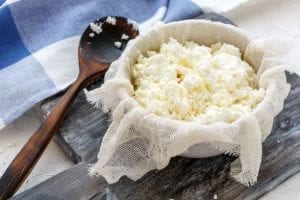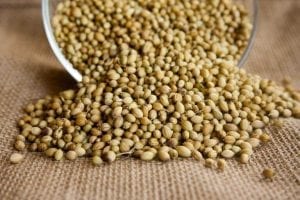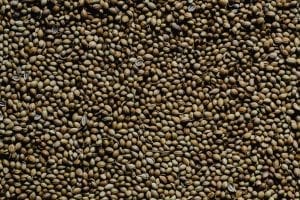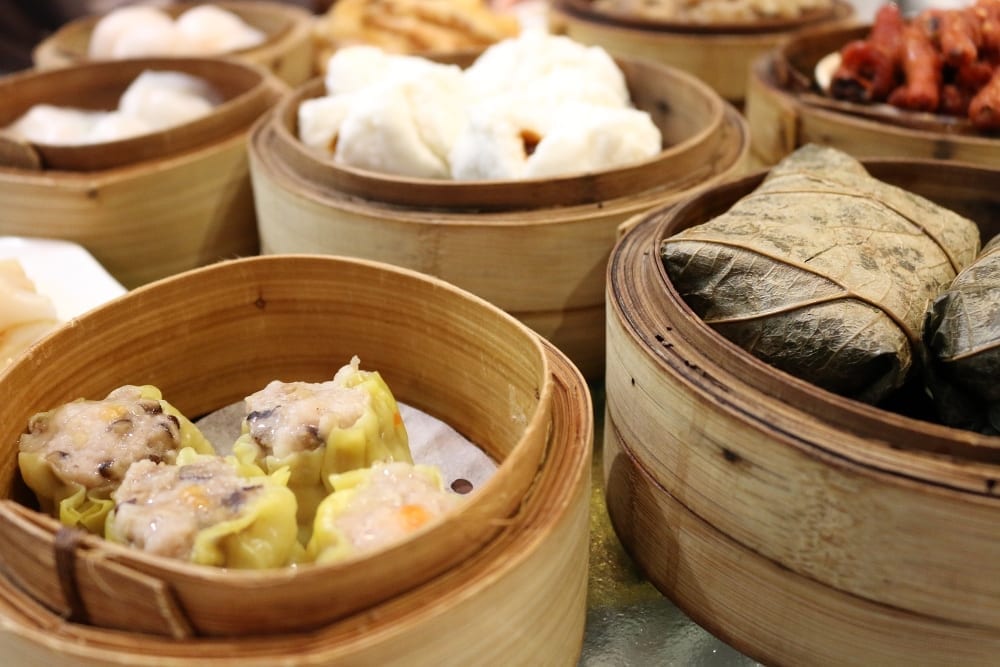
If you frequent Asian restaurants that serve all kinds of dim sum like dumplings and steamed buns, chances are you’ve already encountered a bamboo steamer. It’s a classic piece of cooking equipment essential to Asian cuisine. It’s great for cooking all kinds of food including vegetables and meat in a healthier way! Find out how to use bamboo steamer baskets and why you need one along with handy tips for choosing and taking care of this special cookware.
What Is a Bamboo Steamer?
A bamboo steamer is a traditional wood steamer basket used for cooking steamed Asian dishes. It’s often dubbed a Chinese steamer, although you can find it all across the globe in various Chinatowns and Asian markets.
Unlike the more modern metal and plastic steaming tools we have today, this is made of all-natural bamboo material. It’s conveniently stackable because the bottom of each bamboo steamer pan has holes where steam can easily pass through.
Using a Bamboo Steamer for the First Time
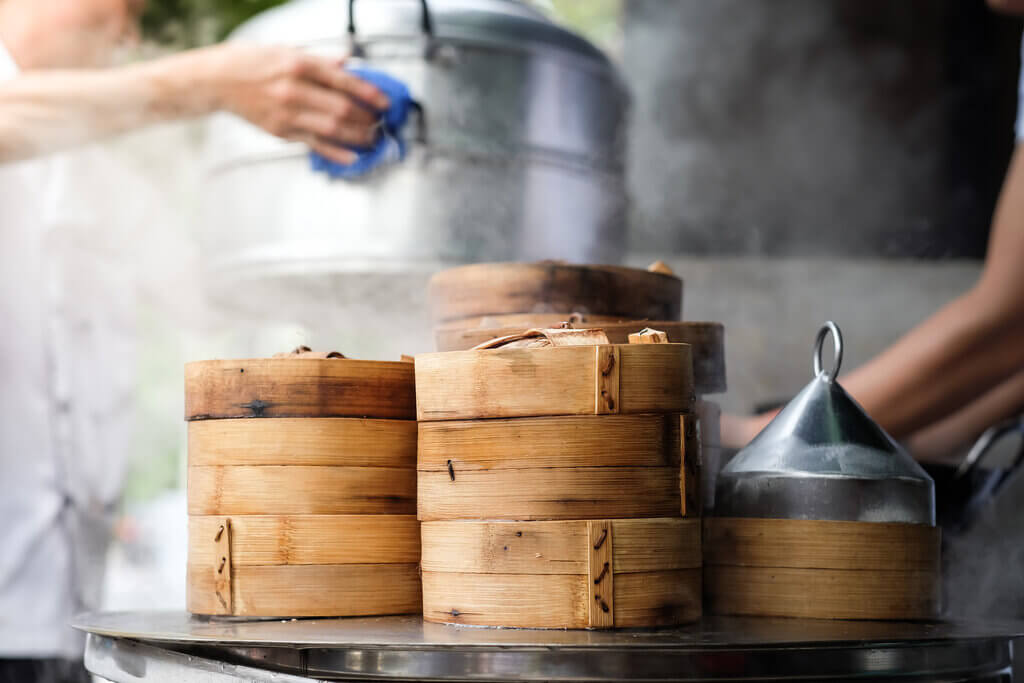
New bamboo steamers bought from your local Asian market may need proper treatment before first use. Think of it like seasoning a cast iron pan. Cleaning it thoroughly will get rid of any dust and make it more durable for future use.
Follow these simple steps to carefully treat your bamboo steamer before using it for the first time:
- Wash the bamboo steamer with hot and soapy water.
- Use a large pot or washbowl that can hold enough water to cover the bamboo steamer.
- Place the steamer for at least 8 hours or you can leave it overnight. It’s best to check the manufacturing information of your bamboo steamer before doing this to ensure it can withstand soaking.
- Remove the tool from the water and set it aside to dry.
- Use an oiled paper towel or cloth to coat the inner and outer surfaces of the bamboo steamer. You can use any type of cooking oil you have on hand like canola, olive, or vegetable oil.
How to Use a Bamboo Steamer Basket
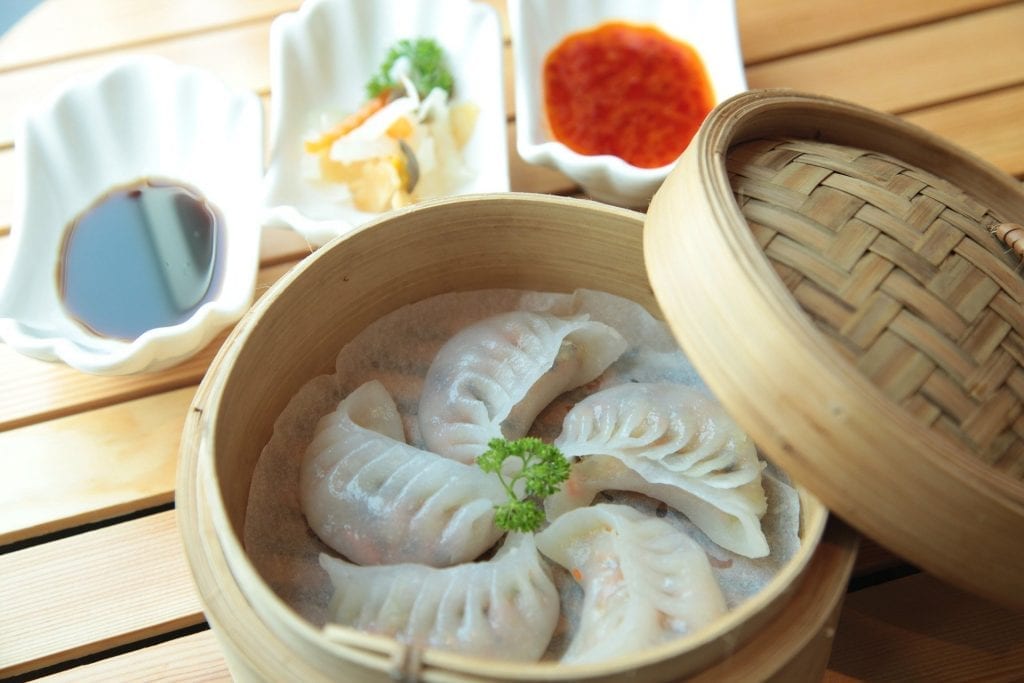
Line the Base of the Steamer
Before placing food on the steamer baskets, we highly suggest covering the base first with steamer liners for easier cleanup. Some bamboo steamers already come with liners, but you can also buy pre-formed mesh liners or cotton ones. Alternatively, you can DIY at home with parchment or wax paper, too!
Shape each piece of paper into a circle with a diameter of ten inches, and poke holes into them so that steam can pass through. You can also use dried lotus leaves and leafy vegetables like napa cabbage and lettuce as an all-natural alternative.
READ ALSO: Cheesecloth: Its Uses & Substitutes You Can Find at Home
Fill a Wok/Pan With Water
The structure of bamboo steamers is built for woks (Asian cooking pans with rounded bottom). The sloped sides of the work allow the steamer to sit without any other equipment needed. We recommend using one if you have it but you can also use other tools, too.
If you’re wondering how to use a bamboo steamer without a wok, it’s quite simple. You can use a regular pan, pot, or saucepan. You can also use a rack to let it sit properly if you’re using a pot or pan.
Fill a pot or pan with 1 ½ or two inches of water to boil. Don’t overfill as you don’t want any liquid getting in your dish when it boils.
- Remember to soak your steamer for at least 20 minutes to prevent scorching. Most especially the bottom layer of the bamboo steamer, if you’re using a few to stack.
Load Food Into Steamer Basket
Over the liners, if you’re cooking pork dumplings gently place them one inch apart from each other. For steaming buns, it’s best to keep them one and a half inches apart from each other. This space gives the individual pieces of dim sum or dumpling enough room to expand. If you’re steaming dishes that can be saucy like steamed sea bass, place them first in a heat-resistant dish or container. Stack the baskets on top of each other once you’ve loaded them. Put the food that would take longer to cook in the bottom tier, so that the steam would reach it quicker.
Place Bamboo Steamer on the Wok/Pan
If you’re using the steamer for the first time, we suggest soaking the rim of the bottom layer in water before using it so that the wood won’t burn. You can also get a steamer with a metal band so that your piece of cookware doesn’t burn where it touches the wok or pan. While the water is still cold, carefully place the stacked bamboo steamers in the wok or pan filled with water. Turn on the heat, and wait for the water to produce steam.
Remove the Bamboo Steamer from the Heat
When the food is cooked, turn off the heat. Use tongs, heat-resistant gloves, or kitchen dishcloths to lift the steamer out of the wok or pan. You can serve your dish inside the steamer basket themselves or transfer the food into a serving dish with tongs or chopsticks.
- Always check the water level. Always keep an eye on your steamer. The water will evaporate from the pan and eventually run dry if you don’t refill it. Carefully pour water from the sides of the pan to keep the steam going. Do this until your food is completely cooked through.
- Carefully open the lid of the steamer away from your face to avoid steam burns.
Kitchen Tools to Use With a Bamboo Steamer
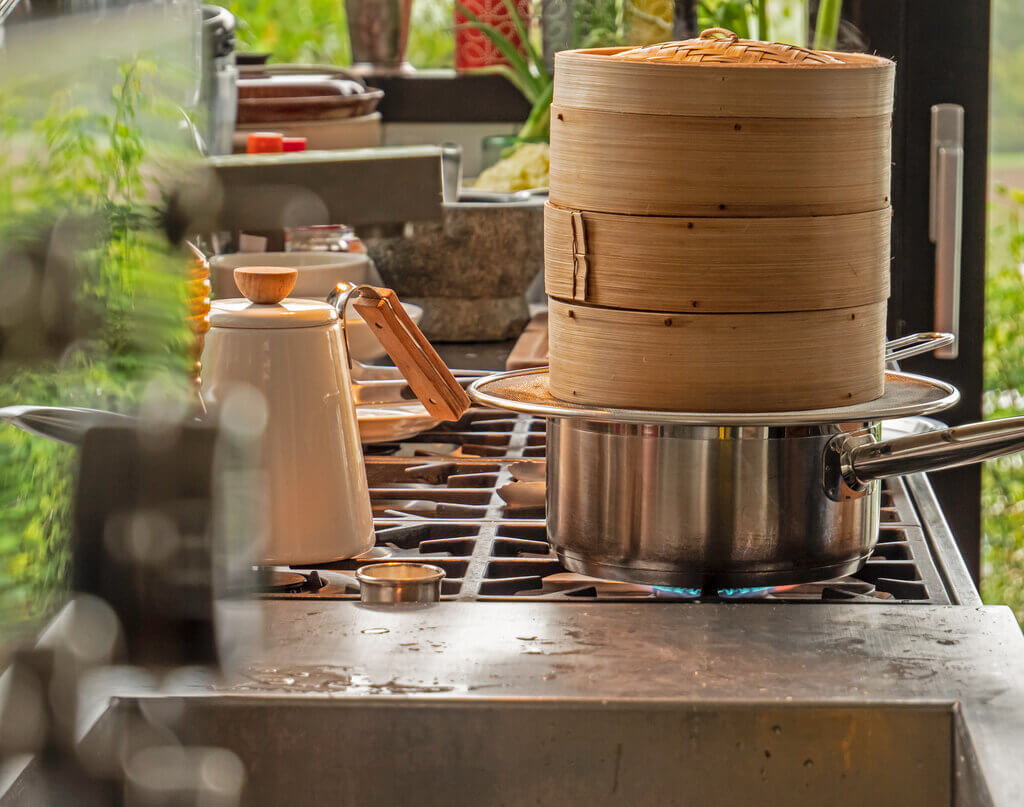
Before preparing a batch of food using your steamer, you’re going to need some essential tools aside from the cookware itself. Some are necessary depending on the main source of steam and some are important to ensure easier cooking. Surely if you’re going to cook with a bamboo steamer, you’ll find these tools useful:
- Wok – The most recommended tool to use as a source of steam for the bamboo steamer. Its structure allows for the steamer to fit snugly without using a rack. Ensure that your wok is bigger than the size of your steamer.
- Pot – Without a wok, you can use a pot that’s just the right size. Stainless steel, enamel, or nonstick can work well but do not overfill with water to not soak the foot with liquid.
- Saucepan – A saucepan slightly bigger than the steamer will also work well. It should be big enough to allow a little space between the sides of the basket and the lip of the pan.
- Skillet – Similar to the saucepan, using one with a slightly bigger diameter will work well as a source of steam. You can steam with a small amount of water with it though, so watch the water level when using this one.
- Rack – Use a small rack to place at the bottom of your pot or pan. This is needed so as to keep a small space between the bamboo steamer and the water.
- Liners – This is important to prevent food from sticking to the bottom of the steamer and for easier cleaning. You can use parchment paper, banana leaves, or cabbage leaves to name a few.
- Tongs, heat-resistant gloves, or dishcloths – For grabbing the hot steamer baskets and for safety. You shouldn’t try to take the steamers out with your bare hands.
How to Find the Best Bamboo Steamer
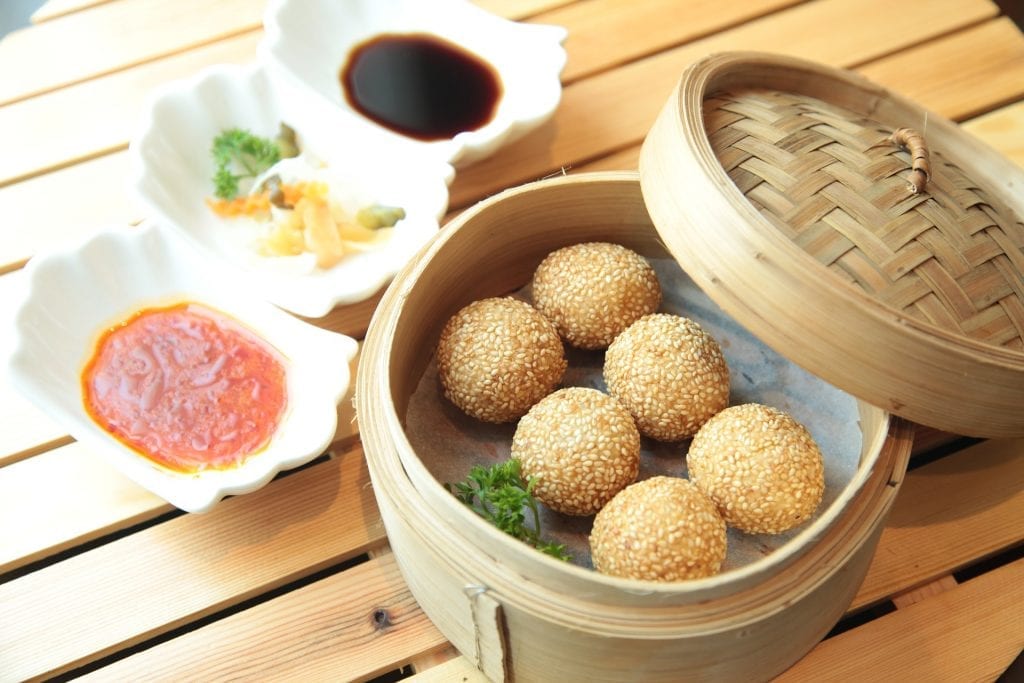
When it comes to bamboo steamers, you’ll have lots of options to choose from. We’ve gathered a few key factors that you can check out to make sure that you get the best steamer for your needs:
Select Premium Quality Bamboo
Bamboo isn’t the sturdiest material for cookware. This is why you should always select a steaming basket made from bamboo of the premium kind. They’ll be more durable and practical in the long run.
Note
Make sure to get steamers that are free from BPA, a harmful industrial chemical.
Check the Lid Quality
We highly recommend getting bamboo steamers with handwoven lids since they are more secure. Also, always check if you can properly seal it too. Go for a steamer with a lid that is completely made of bamboo for a more authentic experience.
Determine Which Size Suits You
The best steamers are the ones that you can use to achieve your cooking needs. Of course, what works best in the kitchen is what works best for you. The standard size of this cookware is ten inches, which is the perfect size to fit in woks and most pans. However, you can also get a smaller one if you’ll only be cooking for a few people.
Moreover, Bamboo steamers also come in tiers of two or three. Likewise, it’s more practical to get a two-tier steamer for cooking small servings. Feel free to get a larger or three-tier version if you plan to use it for gatherings or serving an entire family.
Pros and Cons of Using Bamboo Steamers
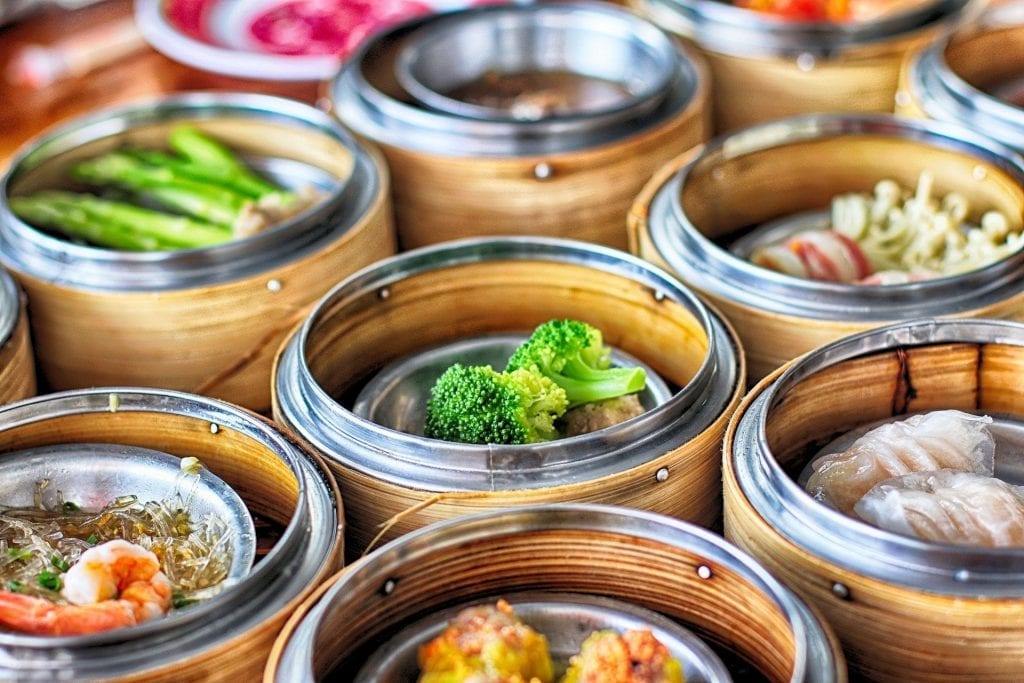
People have been using bamboo steamers for a long time, and it seems like they won’t be stopping any time soon. This piece of cookware has stood the test of time, all thanks to its amazing qualities!
Off the bat, bamboo heats up carefully and absorbs the steam. This makes it perfect for thoroughly steaming all kinds of food without making them wet from condensation. It also doesn’t affect the food flavor-wise, since it doesn’t leave behind any aftertaste. Not to mention being lightweight, cheaper, and more eco-friendly. Additionally, you can use the steamer baskets to directly serve the steamed food. Now isn’t that handy?
However, the downside to using bamboo steamers is that they are less durable than metal or plastic. They also tend to retain smells as the bamboo itself is a porous material. But this can easily be remedied by either steaming lemon or tea bags or letting them sit in a vinegar and water mixture. Bamboo can also be tougher to clean, although this won’t be much of an issue if you use liners and clean it properly..
How to Clean Bamboo Steamer
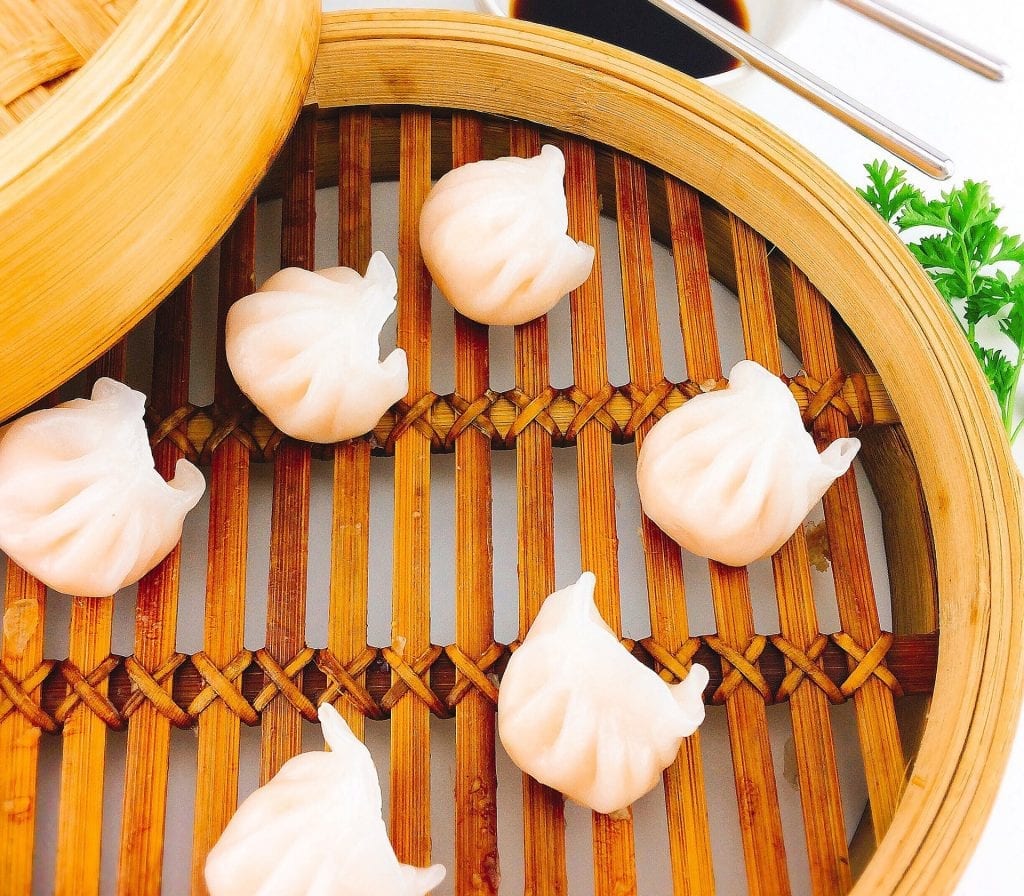
Maintain the quality of your steamer by taking special care of it. First and foremost, you should never use a dishwasher. To clean a bamboo steamer, quickly rinse it with hot water by hand. Scrub it down with a wet cloth or soft nylon brush, but don’t soak it in water for too long.
Because its material is prone to absorbing smells, you should avoid using harsh soaps. If you have to, opt for mild ones so that the scent won’t cling to the steamer. Afterward, give it time to completely air dry for two days to prevent mold and mildew from growing on the wood.
How to Reduce New Bamboo Steamer Smell
Bamboo steamers tend to have dust and a distinctly strong smell brought by natural materials. This strong odor may be too jarring for some especially when it’s completely brand new. Worry not, though! There are many ways to help remove the smell if it bothers you but this may not completely remove the odor immediately.
However, keep in mind that the more you use it, the more this smell will dissipate. By following these steps you can help remove the smell:
- Thoroughly wash the steamer with hot and soapy water
- Steam with the steamer for an hour or two. Check frequently to see if there is enough water.
- If your bamboo steamer can withstand soaking in water. Soak it for another 30 minutes.
If the smell is still too strong for your liking, you can try other remedies like soaking the steamer in one part white vinegar and water mixture. Then rinse with hot water to get rid of any residue. This may leave a vinegary smell though so you need to be thorough while rinsing the tool.
You can also use baking soda if you wish to avoid the funky smell of vinegar. Just sprinkle baking soda on all its surfaces and let it sit for a few hours. Rinse it out with hot water and let it dry.




